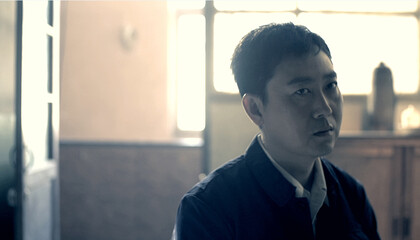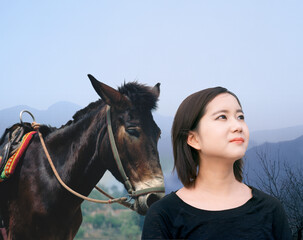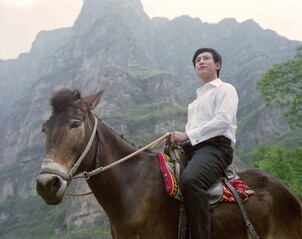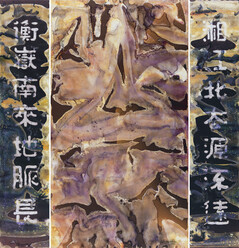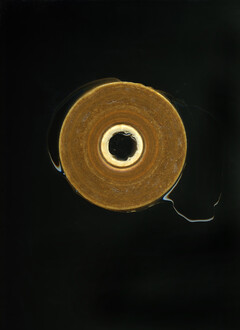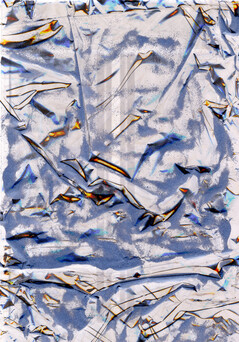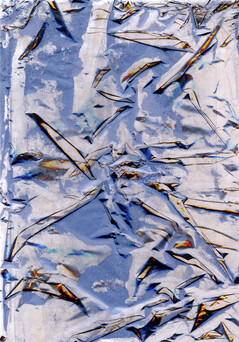Group Exhibition Changsha Municipal Museum; Tan Guobin Contemporary Art Museum, Changsha
ART CHANGSHA 2015 will open in October 2015 at two venues: the Changsha Municipal Museum and at the new Tan Guobin Museum.
For the first time, Art Changsha will feature-- in addition to a strong selection of Chinese artists-- the work of three international artists all living and working primarily in New York City.
The conceptual point of departure for Art Changsha 2015 are forces that are reshaping the Art World: globalization; information; and the proliferation of voices.
The four artists that are invited to participate in Art Changsha 2015 are Francesco Clemente, Wang Guangyi, Wang Youshen, and Zhu Jia.
The ART CHANGSHA 2015 is sponsored by Changsha Municipal Government, Hunan Broadcasting System and Hunan Provincial Museum.
The event is still presented by Tan Guobin Contemporary Art Museum.
Exhibition Duration: 17 October 2015 ---16 December 2015
Exhibition Venue: Changsha Municipal Museum, Tan Guobin Contemporary Art Museum
Thomas Krens, Director Emeritus of the Solomon R. Guggenheim Foundation is the guest curator.
CURATOR’S STATEMENT:
Mr. Krens said that “the Art World is being radically challenged by fact that we live in one world, a rapidly evolving, and increasingly international and interconnected world defined by sweeping and far reaching change. With technology and global communications dramatically increasing accessibility to information and knowledge, the sheer number of choices available to individuals in all facets of their lives is simply staggering. In the contemporary context, isolation is becoming obsolete. We are all part of a global world, defined by diversity and multiple languages, where opposites frequently co-exist side by side.
“Art Changsha has established itself as one of the leading Art Biennales in China, but this will be the first time, however, that artists from outside of China have been included in this, the 5th Art Changsha Biennale. Although all of the artists in this exhibition have participated in international biennales over the past three decades or so, often at the same time, the large scale and huge numbers in the most famous (such as the Venice or Sao Paolo Biennale) have meant that meaningful comparisons or interactions among the art and artists from disparate backgrounds, or different parts of the world, are either accidental, esoteric, or fleeting.
“Art Changsha 2015 can been seen as an excavation of history and poetry facilitated by technology. While the invited artists all have different interests and image vocabularies, they all have created unique visual vocabularies by becoming superbly good at their craft.
“In many ways, this is a golden age for artists. Art making itself is far more complex that ever before and technologically inventive than ever before. Artists are in a position to take advantage simultaneously of multiple modes of communication. The absolute sheer number of serious artists practicing throughout the world is greater than ever before. Thus the number of voices and cultural languages competing for attention is correspondingly proliferating. But the market for their visions is expanding even faster. Opportunities abound for established artists to continually reinvent themselves, their images, their mediums and their locations; and for emerging artists to stake out a personal vision by developing and refining their craft with tools that were rarely if ever available to preceding generations.
“In the world of sophisticated culture, of course, the mechanisms by which art reaches a public have been continuously evolving. The age of the encyclopedic museum collections has been over for almost a century. Contemporary art is finding a large audience by the excitement it generates for a younger cohort, and by the proliferation of all manner and kind of exhibition opportunities from the experimental to the commercial to the institutional.
“Art Changsha 2015 seeks to make a statement about global diversity. Art Changsha 2015 will provide not just a snapshot, but it will attempt to construct a “portrait” of the global scene, and to build a bridge that will demonstrate the possibilities of cross-cultural communication by juxtaposing artists the visitors might not normally expect to see together in such depth in one exhibition. Through that juxtaposition, new insights will emerge.
“The leitmotif of the exhibition is based on four coordinates.
• History as a point of reference for all artists;
• Technology as a force that impacts all artists whatever their medium or manner of work;
• Poetry as the intimate equation with the artists’ concept of self; and
• Grace as the characteristic that distinguishes an artists subtlety and ability to communicate
BIOGRAPHIES (brief)
Francesco Clemente was born in Naples, Italy and has long had a fascination with Eastern cultures. Indeed he has lived and made art in India part of each year for more than 20 years. In the past two years, his interests have moved further East to China for a variety of reasons, and he now is both exhibiting in Shanghai and making prints with a Chinese master printer at a studio at CAFA in Beijing.
Wang Guangyi was born in Harbin, Heilongjiang Province, China. In 1984, he graduated from Zhejiang Academy of Fine Arts (China Academy of Fine Arts). He was a key member of the Northern Art Group and a main sponsor of "'85 New Wave' Large Slide Art Exhibition and Symposium". He was also widely known for being an active player in China’s New Art Movement from the 1980s. His serial works called "Great Criticism" has in particular gained worldwide attention. He was regarded as "the father of China's political pop art."
Wang Youshen was born in Beijing. He graduated from the Central Academy of Fine Arts, Beijing. His art is characterized by a focus on the influence mass media exerts on our thoughts, emotions, and actions. In his photograph-based images, Wang Youshen uses selected press images alongside private photos as the basis of his investigation into the various functions and values of images as well as their truth content and modes of employment. Having worked as a magazine editor, Wang Youshen is particularly concerned about the power of print imagery.
Zhu Jia graduated from theDepartment of Oil Painting in the Central Academy of Fine Arts in 1988.He was at the forefront of photography and videomaking in China for his critical works of the late 1980s, thereforeearning a title as a pioneer of China’s earliest video art and photography. Renowned for his signature aesthetic that is as succinct in its visual language as it is powerful in its resonance of reality,Zhu has earned an important reputation in the history of Chinese conceptual art.
More Pictures:
- 2015 Art Changsha: Zhu Jia
- 2015 Art Changsha: Wang Guangyi/Works and Statements
- 2015 Art Changsha: Wang YouShen/The Medium is The Art
- 2015 Art Changsha: Zhu Jia
- 2015 Art Changsha: Wang YouShen/The Medium is The Art
- 2015 Art Changsha: Francesco Clemente













